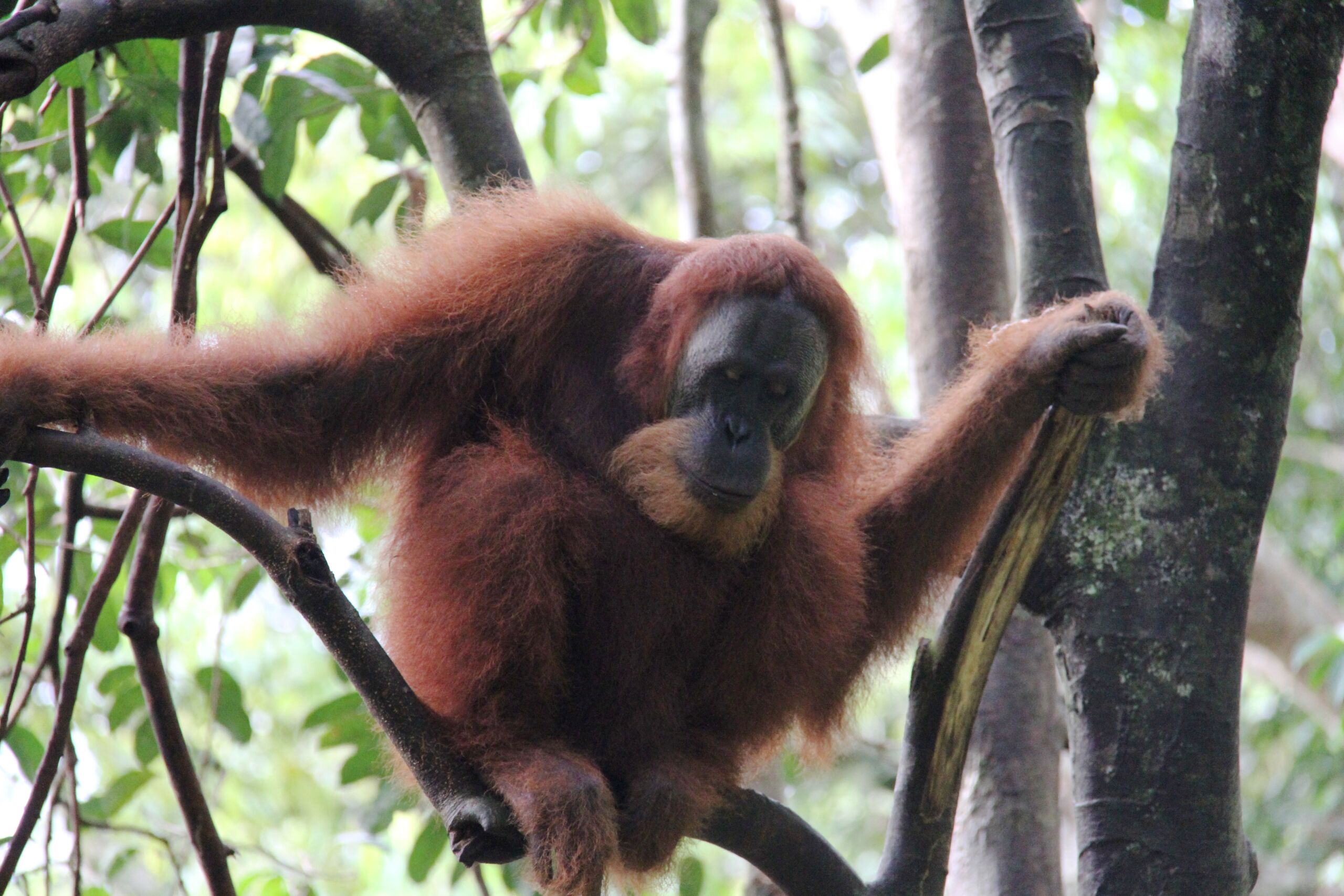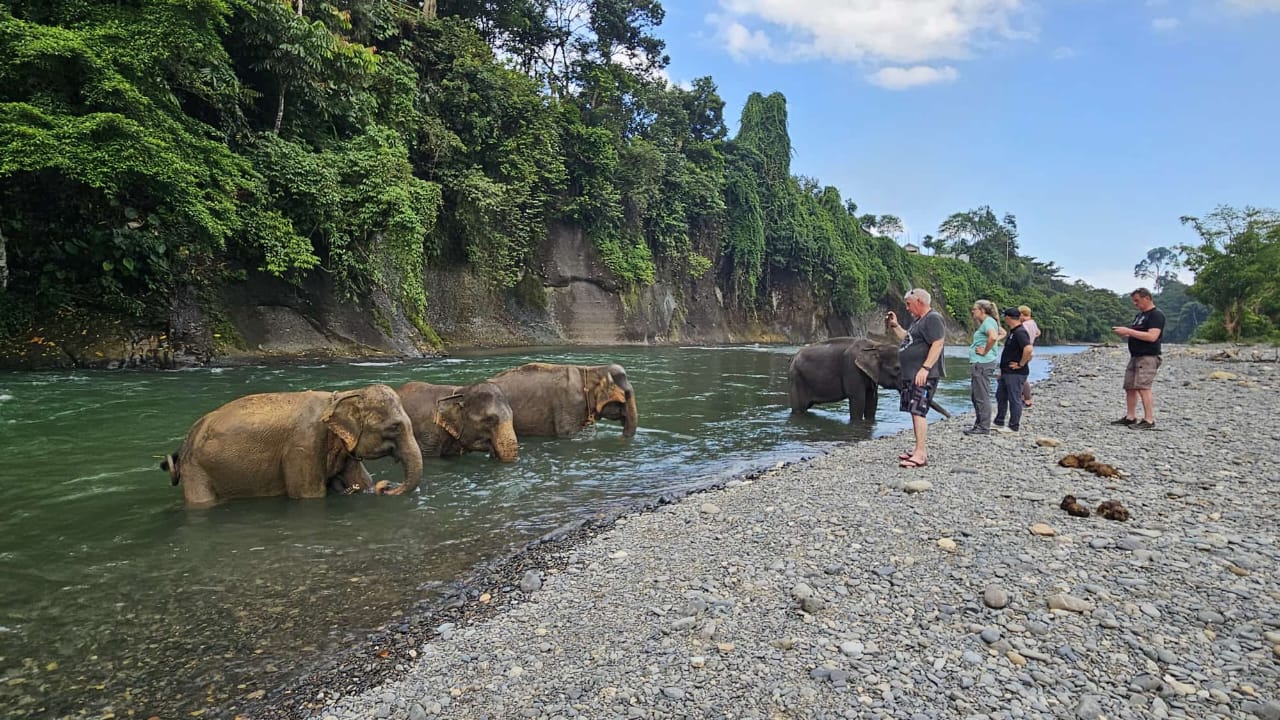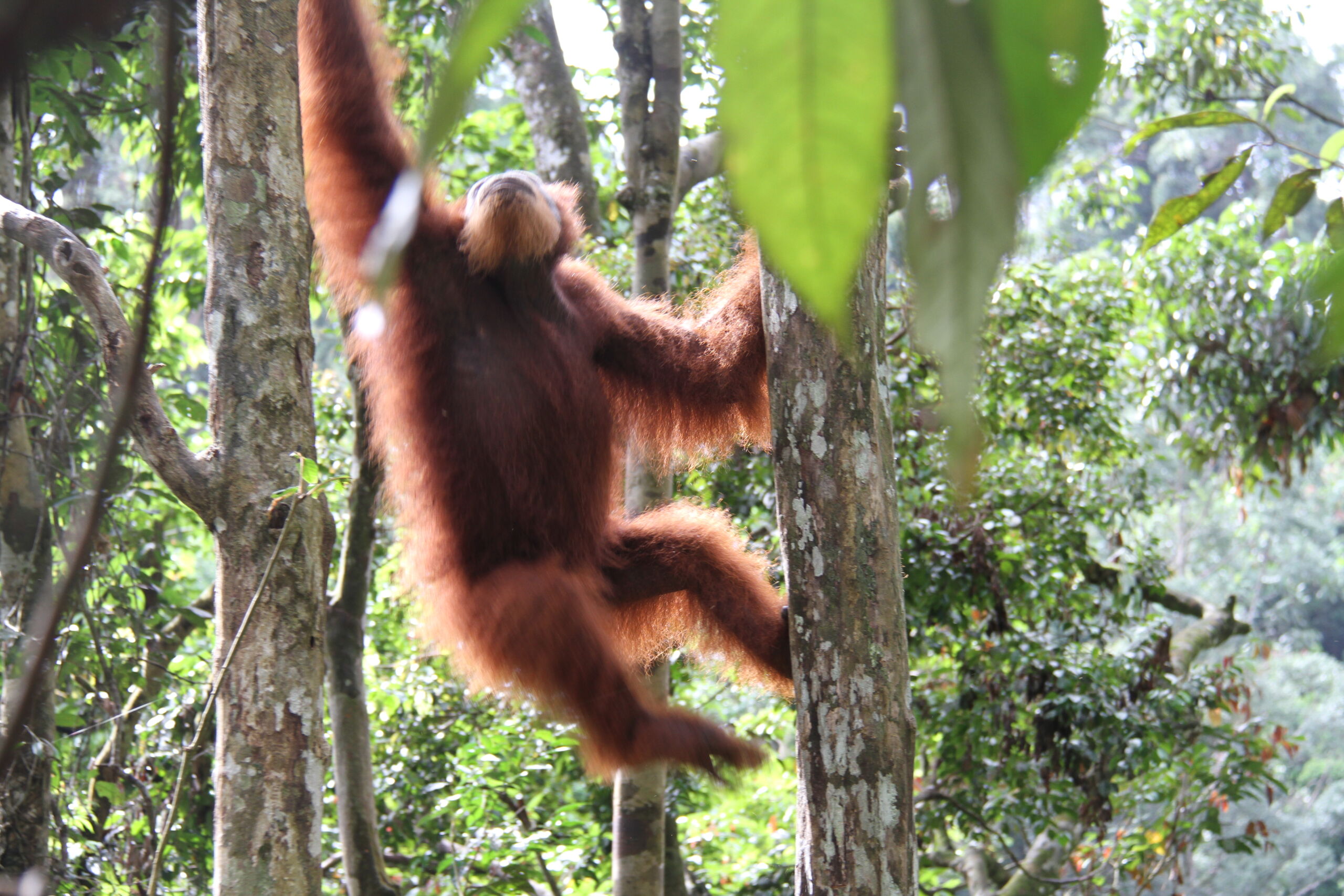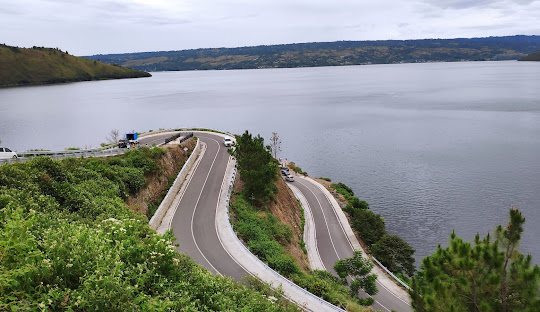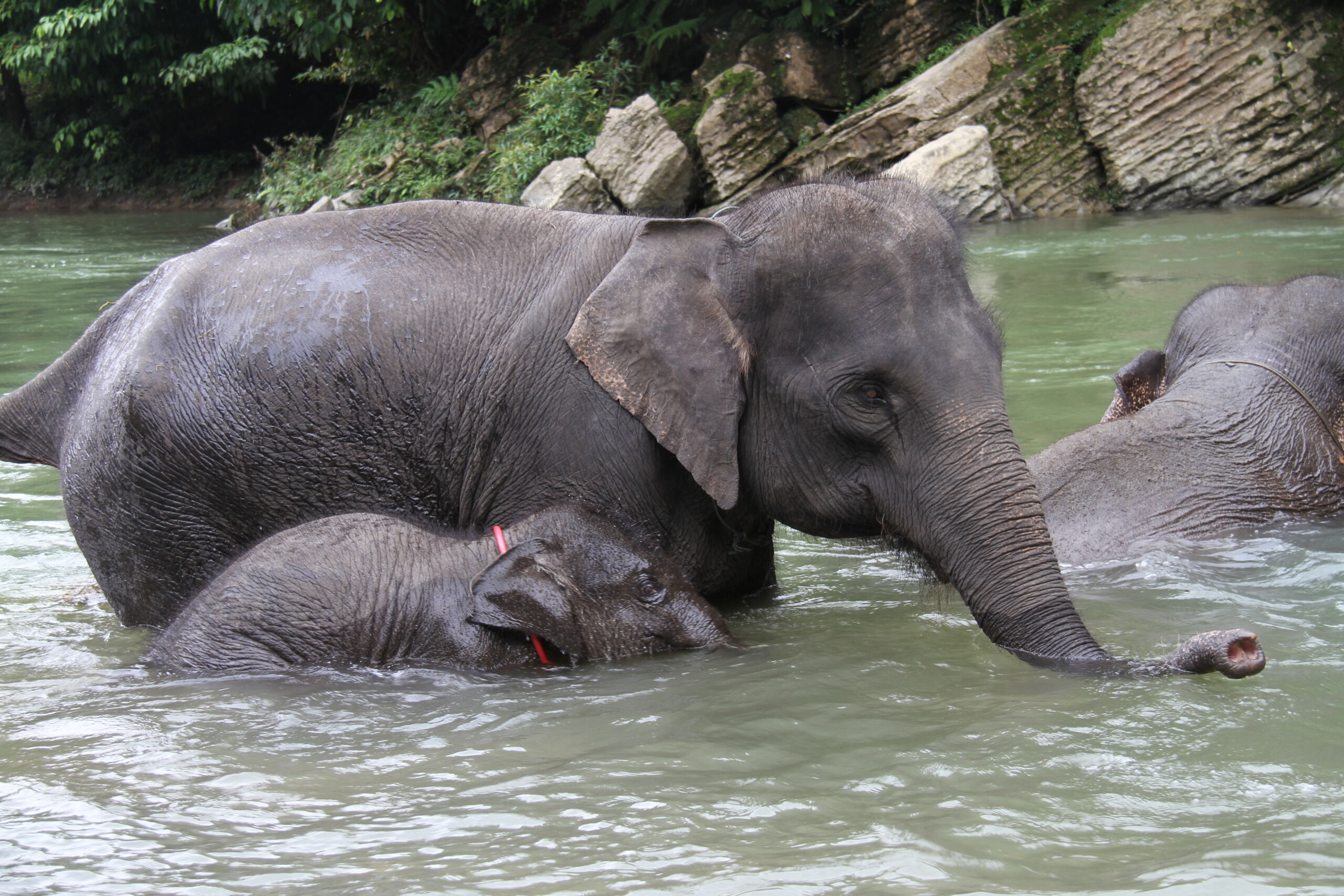Everything You Need to Know about Sumatran Orangutan
The Sumatran orangutan (Pongo abelii) is one of the rarest and most intelligent primates in the world. Endemic to northern Sumatra, Indonesia, these orangutans are Critically Endangered due to deforestation, poaching, and habitat fragmentation. Here’s a detailed, SEO-friendly guide with all the essential facts about this incredible species.
Distribution and Habitat
-
Endemic Location: Northern Sumatra, Indonesia
-
Primary Habitat: Tropical lowland forests, montane forests, peat swamp forests
-
Protected Areas:
-
Gunung Leuser National Park
-
Leuser Ecosystem buffer zones
-
-
Behavior: Arboreal (tree-dwelling), spends nearly all of its life in trees
-
Population: Approximately 14,000 individuals in the wild
Sumatran orangutans are highly dependent on large, connected forest tracts, as fragmented forests make survival and reproduction difficult.
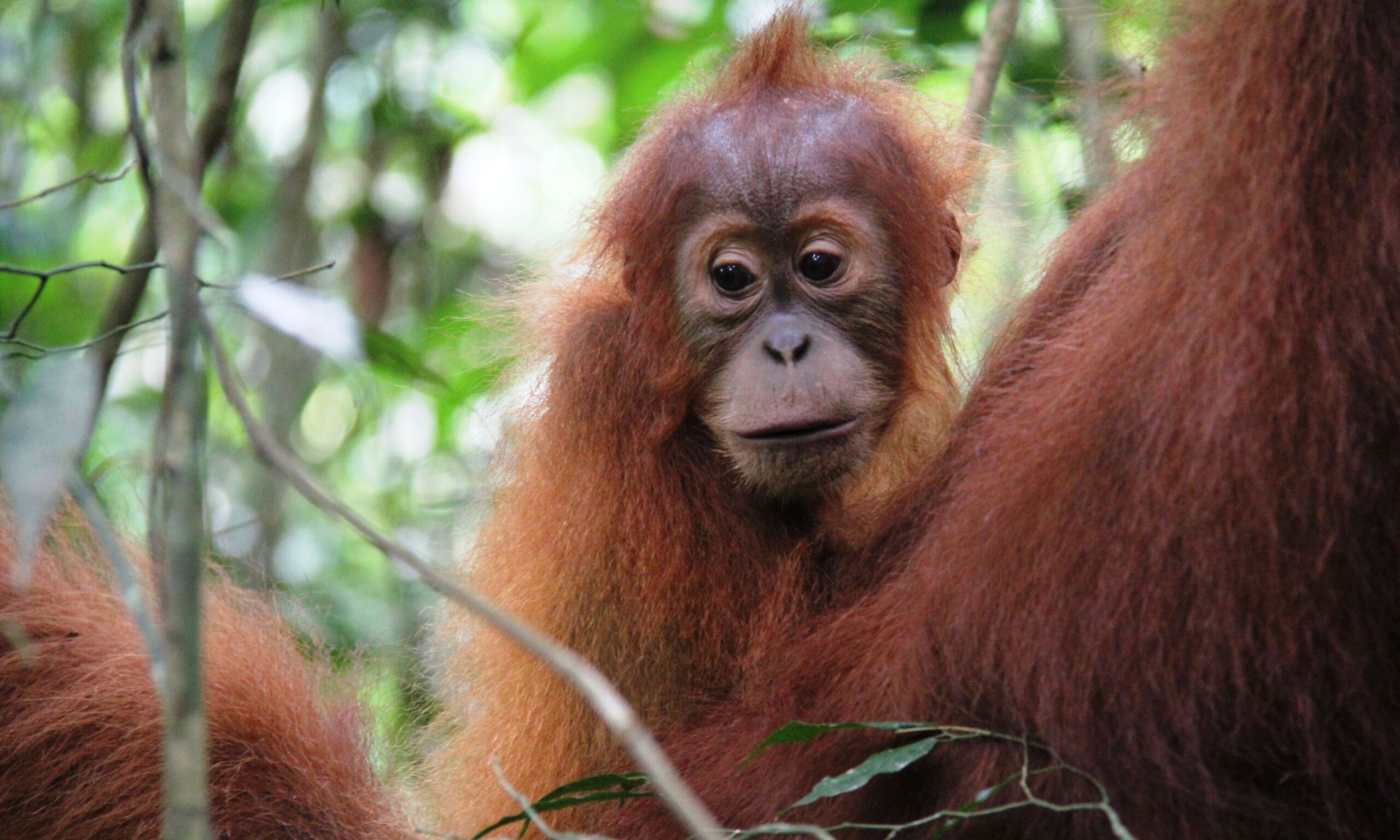
Baby Orangutan In Bukit Lawang
Physical Characteristics
-
Fur Color: Bright orange-red
-
Size:
-
Males: 1.2–1.5 m tall, 50–90 kg
-
Females: 1.0–1.2 m tall, 30–50 kg
-
-
Distinctive Traits:
-
Males develop cheek pads (flanges) and throat pouches for long calls
-
Long, powerful arms adapted for swinging in trees
-
-
Lifespan: 35–45 years in the wild, over 50 years in captivity
Sumatran orangutans are smaller and lighter than Bornean orangutans, making them more agile in the dense canopy of Sumatra.
Diet and Feeding Habits
-
Primary Diet: Fruits (60–70% of intake)
-
Other Foods: Leaves, bark, flowers, insects, honey, bird eggs
-
Feeding Behavior:
-
Forage 6–8 hours daily
-
Travel up to 1 km per day in search of fruit
-
-
Ecological Role: Seed dispersers, helping maintain forest biodiversity
Their diet diversity and ability to find seasonal fruits make them crucial for the health of the rainforest ecosystem.
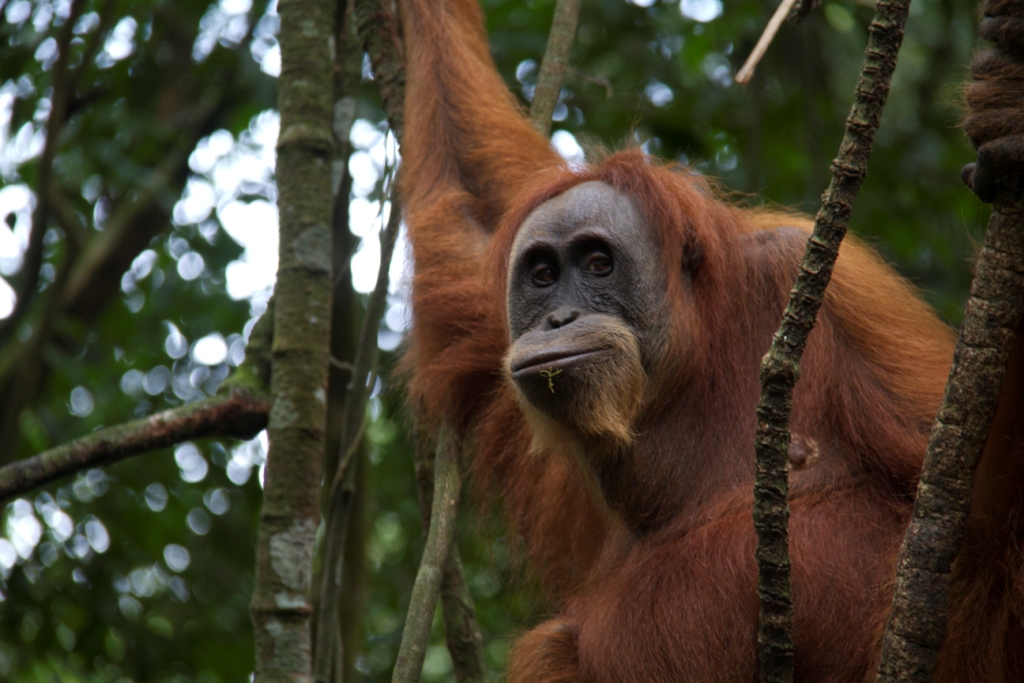
Male Sumatra Orangutan in Bukit Lawang
Behavior and Social Structure
-
Lifestyle: Mostly solitary; males are territorial while females live with dependent offspring
-
Arboreal: Build daily sleeping nests in trees
-
Communication: Vocalizations (long calls), facial expressions, gestures
-
Tool Use: Use sticks to extract insects, leaves as umbrellas, and branches for safety checks
-
Mobility: Excellent climbers and swingers, rarely descend to the ground
Sumatran orangutans are among the most intelligent primates, capable of problem-solving and exhibiting complex behaviors.
Reproduction and Life Cycle
-
Sexual Maturity: Females 8–12 years, Males 15–20 years
-
Gestation: ~8.5 months (260 days)
-
Offspring: Usually a single infant
-
Maternal Care: Infants stay with mothers for 6–8 years, learning survival skills
-
Interbirth Interval: Long, ~6–8 years, slowing population recovery
The long maternal care period contributes to strong family bonds and learning behaviors but also means populations grow very slowly.
Ecological Importance
-
Keystone Species: Essential for seed dispersal and forest regeneration
-
Biodiversity Role: Helps maintain the structure and diversity of rainforest ecosystems
-
Indicator Species: Healthy orangutan populations reflect a healthy forest
Without orangutans, Sumatra’s forest ecosystems would decline rapidly, affecting countless plant and animal species.
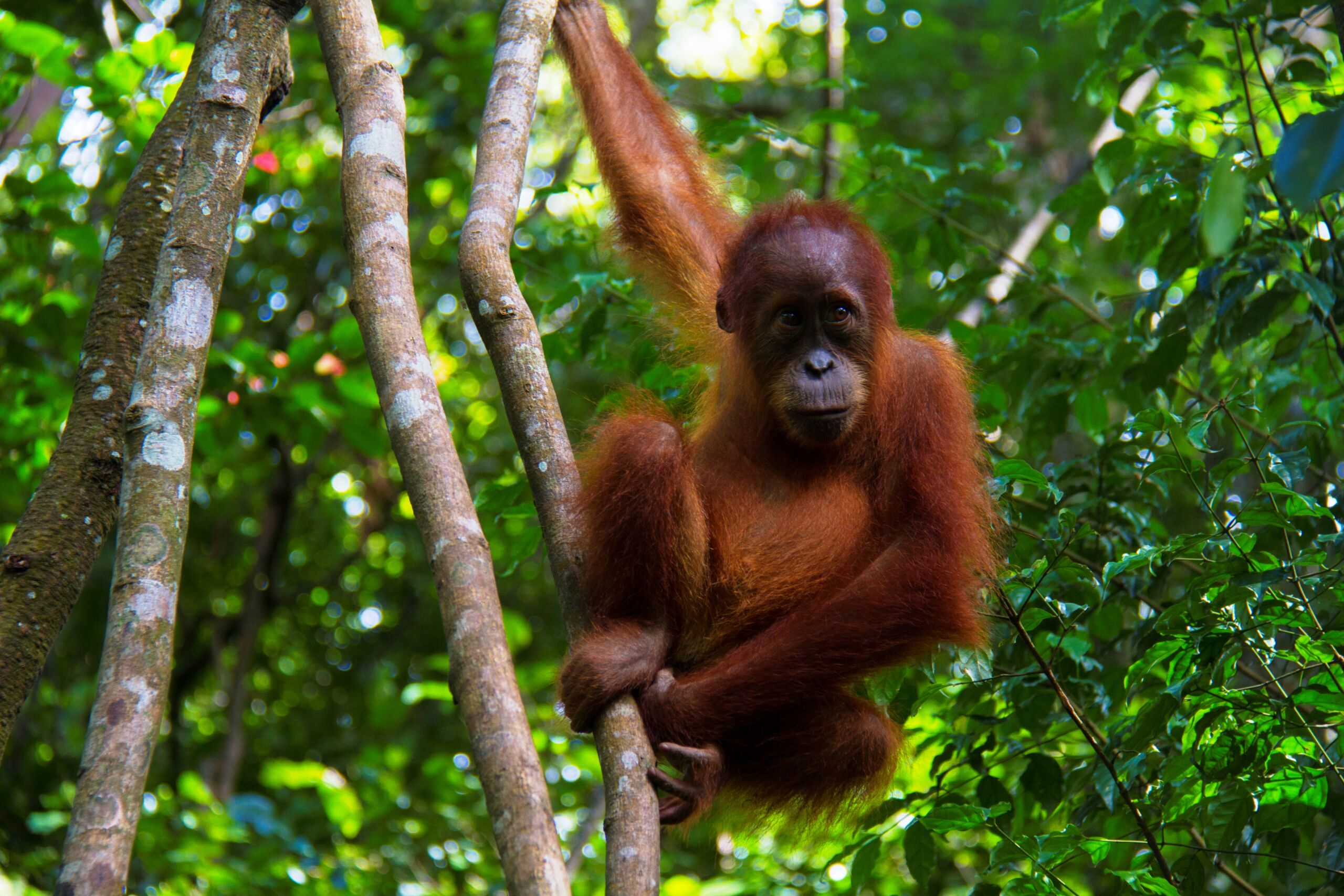
Baby Sumatran Orangutan Bukit lawang
Threats
-
Deforestation: Palm oil plantations, logging, and agriculture destroy habitat
-
Illegal Wildlife Trade: Infants are captured for pets; mothers are often killed
-
Human–Wildlife Conflict: Orangutans raiding crops face retaliation
-
Climate Change & Fires: Peatland fires destroy habitats and release CO₂
If current trends continue, Sumatran orangutans could face extinction within decades.
Conservation Efforts
-
Protected Areas: Gunung Leuser National Park, Leuser Ecosystem buffer zones
-
Rehabilitation Programs:
-
BOS Foundation
-
Orangutan Foundation International
-
Siberut Orangutan Conservation Program
-
-
Community Engagement: Eco-tourism and local education reduce human-orangutan conflicts
-
Global Awareness: Campaigns to reduce palm oil demand and illegal wildlife trade
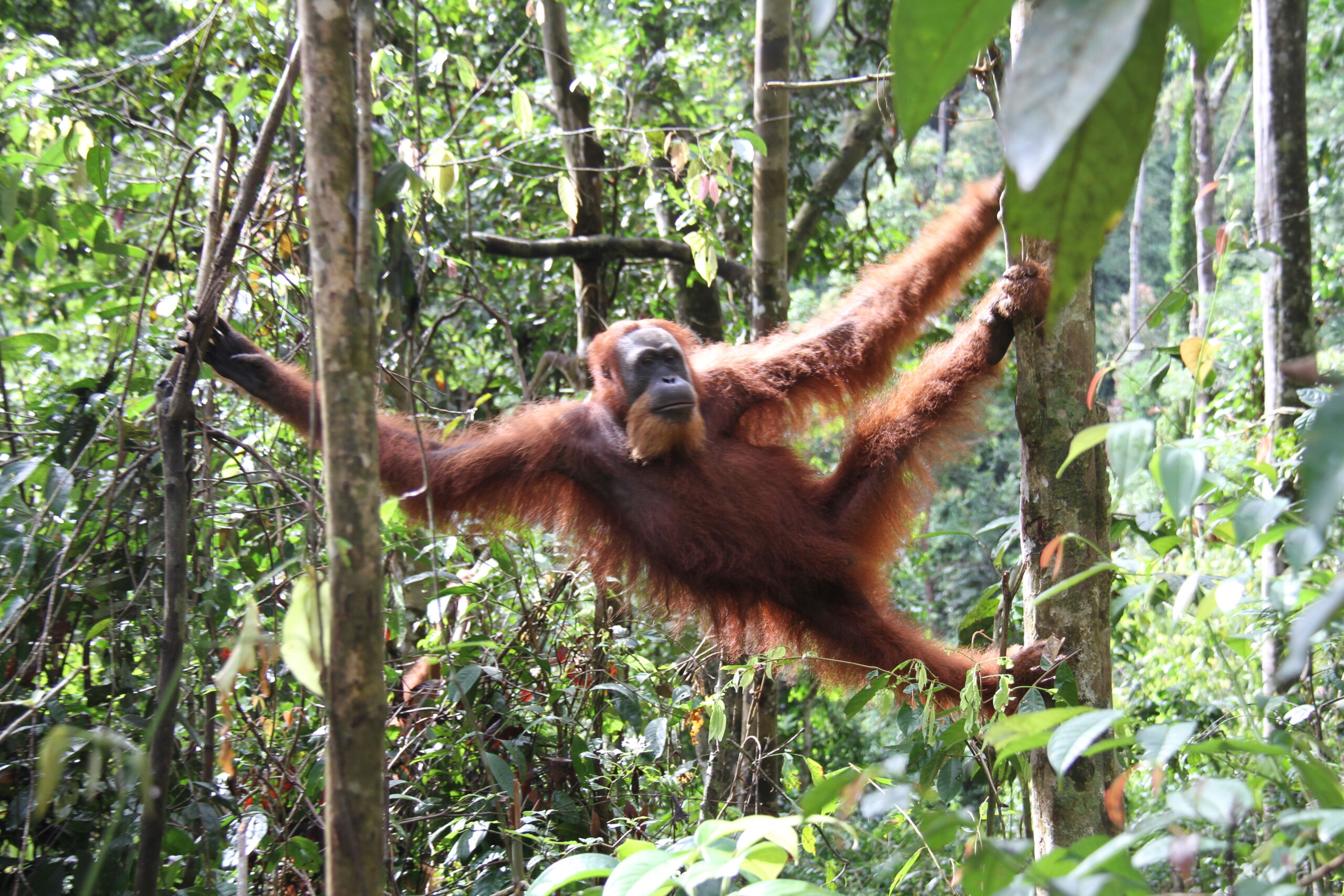
Sumatra Orangutan in Bukit Lawang
Quick Facts About the Sumatran Orangutan
| Fact | Detail |
|---|---|
| Scientific Name | Pongo abelii |
| Subspecies | Sumatran orangutan |
| Conservation Status | Critically Endangered |
| Population | ~14,000 individuals |
| Primary Threats | Deforestation, poaching, habitat fragmentation |
| Diet | Fruits, leaves, insects, bark |
| Behavior | Arboreal, solitary, intelligent |
| Lifespan | 35–45 years in the wild |
Conclusion
The Sumatran orangutan is a gentle giant and a critical part of Sumatra’s rainforest ecosystem. Protecting them ensures the survival of thousands of plant and animal species and preserves one of the most biologically rich forests on Earth.
Through conservation efforts, sustainable practices, and global awareness, we can ensure that these intelligent, tree-dwelling apes continue to thrive in the wild.
Quick Facts About the Sumatran Orangutan
| Fact | Detail |
|---|---|
| Scientific Name | Pongo abelii |
| Subspecies | Sumatran orangutan |
| Conservation Status | Critically Endangered |
| Population | ~14,000 individuals |
| Primary Threats | Deforestation, poaching, habitat fragmentation |
| Diet | Fruits, leaves, insects, bark |
| Behavior | Arboreal, solitary, intelligent |
| Lifespan | 35–45 years in the wild |
